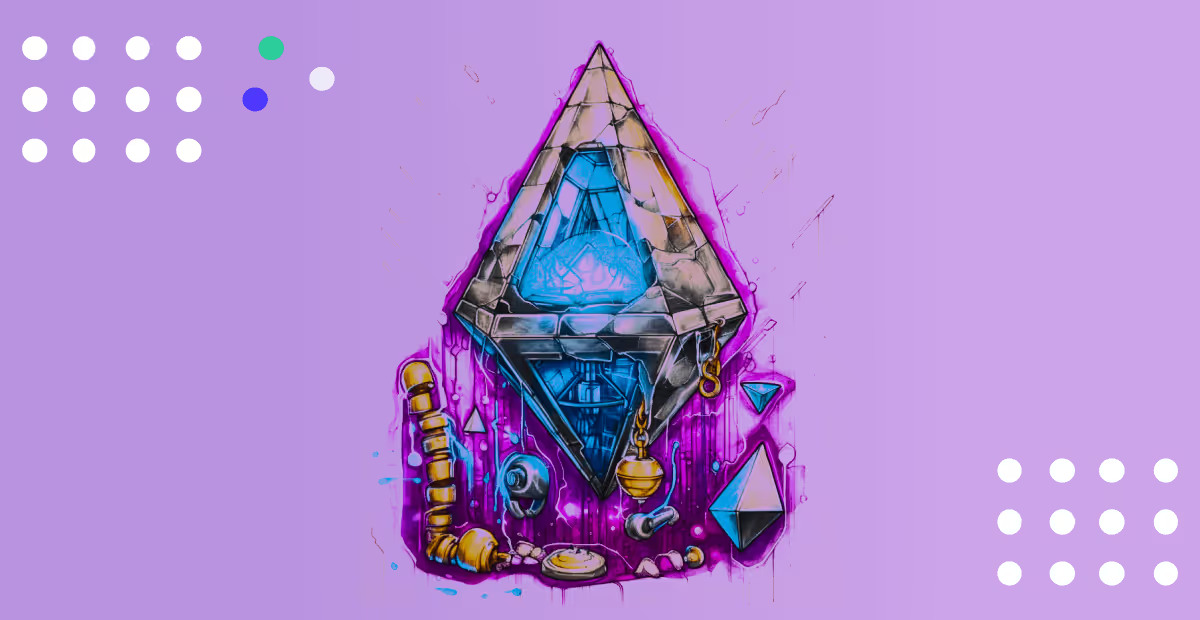The ERC1155: The Multi-Token Standard



Ethereum has emerged as a robust platform for creating and managing digital assets through various token standards. Initially, ERC20 became the standard for creating fungible tokens, facilitating a wide range of decentralized applications (dApps). Subsequently, the advent of ERC721 enabled the creation of non-fungible tokens (NFTs), each possessing unique attributes. These advancements paved the way for the inception of a more versatile standard.
Aiming to encapsulate the best of both worlds, ERC1155 was introduced by Enjin, designed to be both fungibility-agnostic and gas-efficient. Unlike its predecessors, ERC1155 enables the management of both fungible and non-fungible tokens under a single smart contract. This not only economizes on-chain data but significantly reduces gas fees, a major “hoorah” for developers and users alike.
ERC1155's unique architecture lends itself to a myriad of use cases, bringing a new era of digital asset management on the Ethereum blockchain.
ERC1155 embodies a revolutionary approach by housing multiple tokens within a single contract. This is starkly different from previous standards like ERC20 and ERC721, which require separate contracts for each token type. For instance, in a gaming scenario, one could have different assets like gold, silver, and unique items like swords or shields all managed within a single ERC1155 contract. This significantly reduces the complexity and cost usually associated with deploying and managing multiple contracts.
The ingenuity of ERC1155 is further showcased in its batch operations. Functions like balanceOfBatch and safeBatchTransferFrom enable querying and transferring multiple tokens in a single transaction, respectively. This is a significant upgrade in terms of efficiency and gas savings. Here are code snippets illustrating these functions:
Token minting in ERC1155 is facilitated through the mint and _mintBatch functions, allowing for the creation of new tokens either on-demand or in batches. This flexibility is crucial for various use cases, including gaming, where different types of assets need to be minted at different times or in different quantities. Below are examples of how these functions can be utilized:
The ERC1155 token standard introduces several functions that enhance its usability and flexibility compared to earlier Ethereum token standards like ERC20 and ERC721. Here is a list of functions associated with ERC1155:
These functions collectively contribute to the flexibility and efficiency of the ERC1155 token standard, enabling both fungible and non-fungible tokens to co-exist within a single contract, and facilitating batch operations for better gas efficiency.
ERC721 exclusively handles non-fungible tokens (NFTs), ensuring each token's uniqueness. In contrast, ERC1155 can manage both fungible and non-fungible tokens within the same contract, providing a more flexible framework for token management.
Batch operations are a hallmark of ERC1155, enabling efficient querying and transferring of multiple tokens in a single transaction. On the other hand, ERC721 lacks native batch operation capabilities, making ERC1155 a more gas-efficient choice especially when dealing with multiple tokens or assets. This contrast underscores the technical advancements embedded within ERC1155, making it a potent choice for a broader spectrum of decentralized applications and that ERC 721 vs ERC1155.
OpenZeppelin facilitates the deployment of ERC1155 contracts through its well-structured libraries. It provides an implementation of ERC1155 which can be used as a solid foundation for your contract. For instance, the OpenZeppelin ERC1155 contract provides a detailed structure on how to deploy an ERC1155 contract.
Using OpenZeppelin, the creation of an ERC1155 contract becomes a straightforward process:
OpenSea, one of the prominent NFT marketplaces, supports ERC1155, allowing users to trade and manage their ERC1155 tokens seamlessly. This integration underscores the growing acceptance and utility of ERC1155 NFT in the NFT ecosystem.
The metadata URI function in ERC1155 provides a standardized way to link tokens to metadata, enhancing the informational richness and uniqueness of each token on marketplaces like OpenSea.
ERC1155 example contracts on github.
The totalSupply(id) function isn't a standard function within the ERC-1155 token standard as per the standard's specification. However, it's possible to implement a totalSupply function in a custom ERC-1155 contract to keep track of the total supply of each token ID.
No, you don’t need any specific wallet for ERC1155 as most of the standard wallets support this standard.
Yes and No, so if you are building a web3 app from scratch you may need the standard ERC1155 json abi to decode many application contracts to do custom operations for example finding all transactions etc,
But as discussed in our Blockchain Frameworks Article, a better way of building web3 apps is using smart frameworks like Tatum SDK.
Well yes, Tatum SDK supports Creating 1155 Collections, Fetching all data around it like ERC1155 Metadata and Notifications as well, which can help you get started building apps that use ERC1155 token standard.
Try Tatum APIs and SDKs for free.
[.c-wr-left][.c-copy-card][.c-copy-top][.c-copy-hex]npm i @tatumio/tatum[.c-copy-hex][.c-copy-top][$r-copy-to-clipboard=npm i @tatumio/tatum][.c-copy-icon][.c-copy-icon][$r-copy-to-clipboard][.c-tooltip]Copied![.c-tooltip][.c-copy-card][.button-blue-post]Get started[.button-blue-post][.c-wr-left]
No ERC1155 is a token standard that does not require you to have any new ERC1155 address to interact with ERC1155 standard tokens.
ERC1155’s hybrid nature and batch operation capabilities signify a substantial leap towards efficient digital asset management on the Ethereum blockchain, making it a promising standard for future blockchain projects.
The adoption of ERC1155 across various platforms and projects exemplifies its potential to become a cornerstone for digital asset management, heralding an exciting future for both developers and users in the blockchain space.
Build blockchain apps faster with a unified framework for 60+ blockchain protocols.